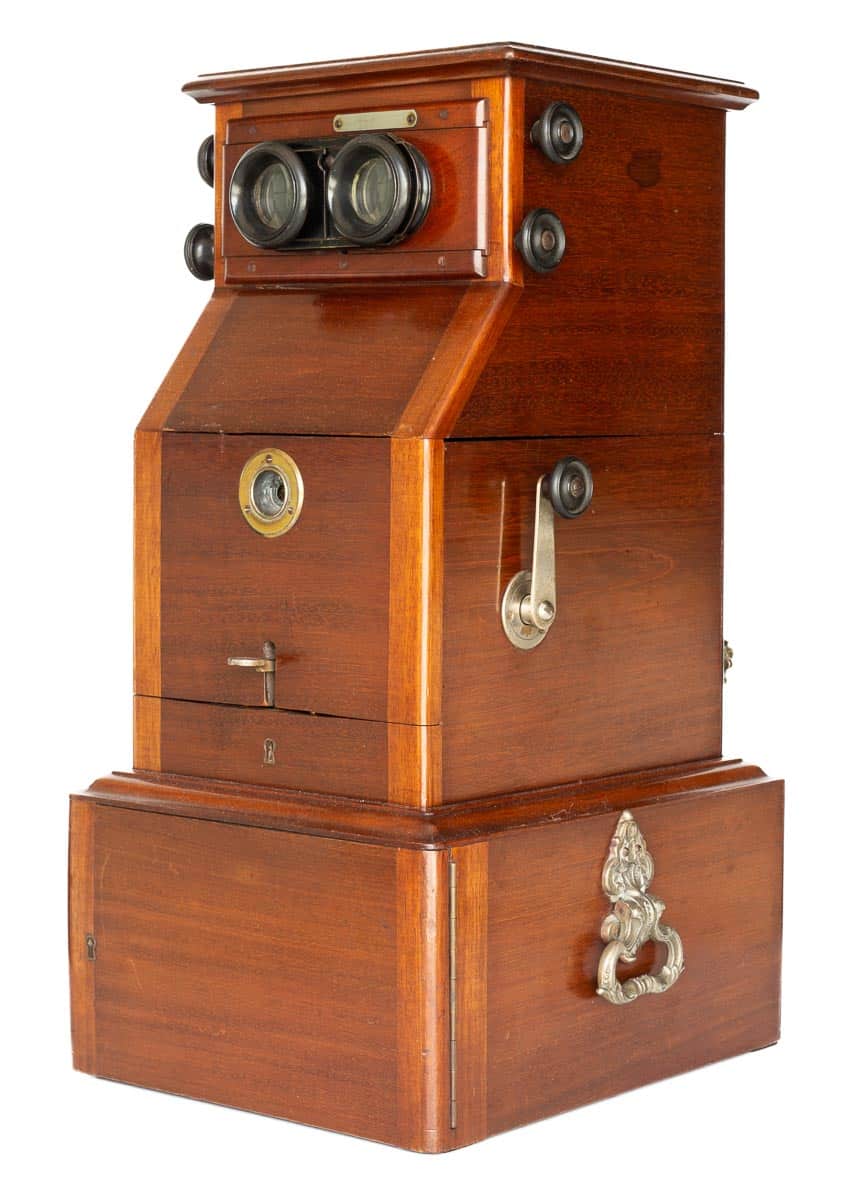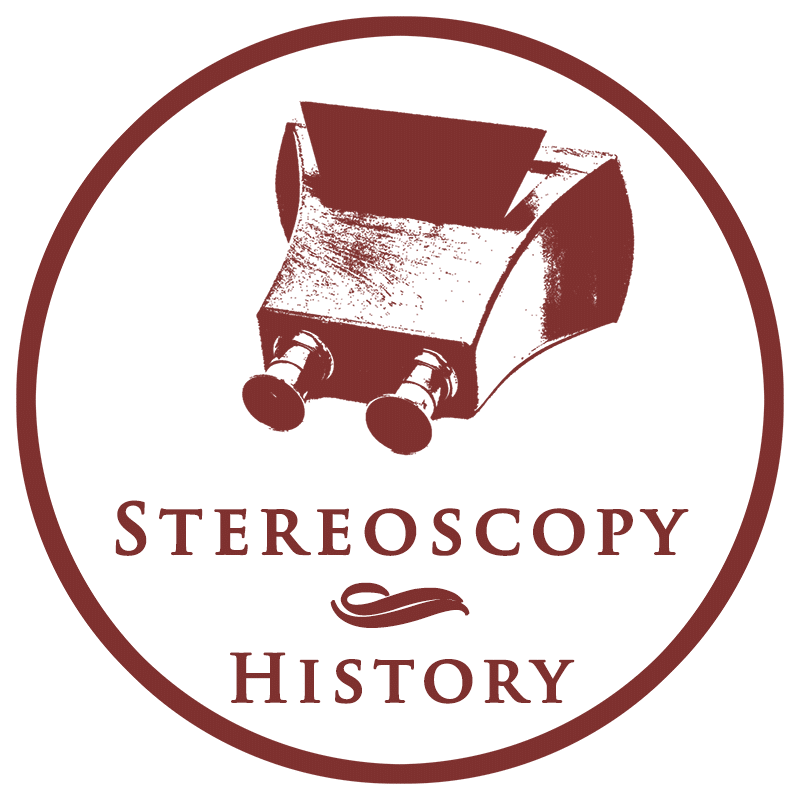
Le Stéréothèque was Mattey’s first tray-based multi-view stereoscope. After its introduction in 1903, it remained Mattey’s most advanced stereoscope for over 20 years, after which it was replaced by Le Métascope. The crank-driven mechanism is bi-directional. The two metal fingers that lift the slide from the tray are attached to a metal disc. The rotation of the disc moves the fingers up and down. When a switch on the front panel is pushed down, the turning of the crank will move the slide tray over the rail without lifting the slides. This allows users navigate to a specific image while keeping the slides in the tray. A small round window shows the number of the slide that is selected.
The shown stereoscope is a 45 x 107 mm “foyer court” model, with a storage compartment for eight slide trays. The foyer court, or short focus, model can be recognised by the sloping panel. Short focus models offer a solution to a typical problem encountered with 45 x 107 mm tray-based stereoscopes. The minimum distance between the lenses of the stereoscope and the loaded glass slide is the length of the slide tray, which is about 10 cm. With larger stereoview formats, this is not a problem, but the image of a 45 x 107 mm slide appears relatively small from this distance, and a significant amount of the dark space inside the stereoscope is visible. Mattey solved this issue by using short-focus lenses to magnify the image and show a near-full-screen image. Le Stéréothèque court foyer was available in 45 x 107 mm and 6 x 13 cm formats and had a significantly higher price than standard models.
Specifications
| Manufacturer: | Mattey |
| Year of introduction: | 1904 (patent filed) |
| Year of manufacture: | Unknown |
| Type: | Tabletop |
| Viewer: | Multi-view |
| Mechanism: | Tray-based |
| Bidirectional navigation: | Yes |
| Serial number: | None |
| Stereoview support: | Glass |
| Stereoview format: | 45 x 107 mm |
| Number of slides: | 25 |
| Lens focussing: | Yes |
| Inter-ocular adjustment: | Yes |
| Eyepiece blinders: | No |
| Dimensions (L x W x H): | 27 x 23 x 48 cm |
| Construction: | Mahogany |
| Other features: | The logo of the Pennard & Fouquet trademark is visible inside. The bakelite slide trays contain the name Stéréoscope DUMO |
Patent
| Number: | FR3409311 |
| Title: | Passe-vues stéréoscopiques |
| Filing date: | 03-03-1904 |
| Publishing date: | 23-07-1904 |
| Applicant(s): | Mattey père et fils |
Glossary: inter-ocular adjustment / multi-view / tabletop / tray-based / short-focus lens
Mattey
Mattey was one of the leading manufacturers of stereoscopes in France. The company offered the widest range of stereoscopes of all manufacturers. The company was founded in 1872, but its expansion began with the establishment of Société Mattey père et fils on 31 December 1902. The names behind the company were André Élie Victor Mattey (1844–1919), and his son Albert Georges Mattey (1873–1940). Mattey’s business grew through acquisitions. The most important was the acquisition of Maison Legendre in 1902, which set the foundation for Mattey’s stereoscope business.
Société Mattey père et fils was dissolved on 1 January 1912, and the company was continued by Albert Georges as Stéréoscopes A. Mattey. The company was located at 208, Rue Saint-Maur in Paris from 1906 but moved to 15, Rue Clavel in 1936. After the Second World War, the company continued as Société des Anciens Établissements A. Mattey. Mattey’s products were also branded Unis France, a collective trademark to guarantee the French origin of high-quality products, made by different companies.
The complete story of Mattey
References
- Mattey père et fils (1904) Passe-vues stéréoscopiques. Via: data.inpi.fr ↩︎
